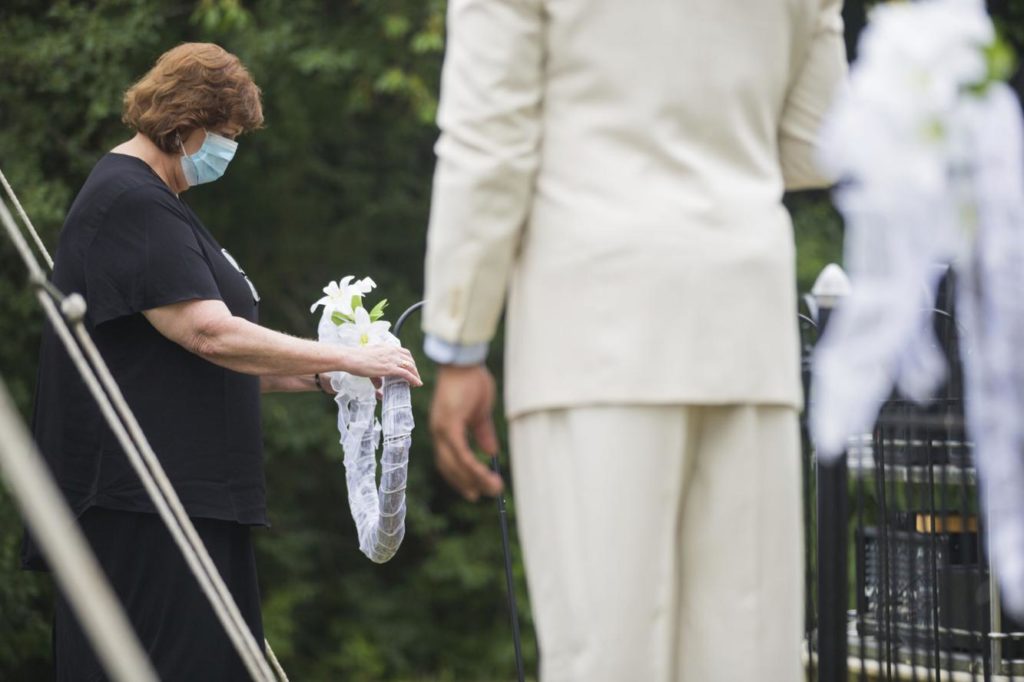More than 600 unmarked graves rest behind the grounds of River Bluff Health & Rehabilitation.
The unknown men, women and children were buried between 1854 and 1954. Until recently, they had never been honored.
A small group consisting of Rockford Mayor Tom McNamara, community members, ministers and residents came out for the first ever memorial, the Rockford Register Star reports.
“This is long overdue,” said Winnebago County Board member Angie Goral.
The memorial consisted of the history, prayer and the placing of three wreaths: One to represent Rockford, another River Bluff and the last for Winnebago County. There was also a rifle salute and rose petals were tossed into the air to close the service.

River Bluff was an asylum in the 1800s before becoming a nursing home. A small farmhouse was purchased in 1853 with 36 people, which included “three insane paupers, two raving maniacs and one entirely naked man whom it was impossible to keep clothed,” according to records held at the Rockford Public Library.
Over time it became a place for “the aged, the insane and sick,” according to records.
Residents of what was then called the “Poor House” were “self-sustaining” and raised their own crops and cattle.
They buried the dead in the back. It was called the Winnebago Poor Farm Cemetery.
“Back then, the mentally ill were only confined, not cared for,” Goral said.
Some of the dead were veterans, although what branch they served in and when will never be known, said Laura Doise, River Bluff admissions coordinator.

“We may not know all of their individual names and we may not know their stories,” McNamara said, “but we certainly do know that they were Winnebago County residents. We know that they had mothers and fathers, aunts and uncles, brothers and sisters, and they were neighbors of residents who are known. They are our family here in Winnebago County. They absolutely deserve to be remembered for the role that they have played in our community.”
River Bluff is owned by Winnebago County and the bodies will remain at the site.
The Poor Farm Cemetery has one stone monument to mark the location of the old cemetery grounds. Records for the cemetery started in 1884, although it’s believed that some were buried before that year.
There are 672 people buried there and no headstones. Record keepers only noted what information they had at the time of death.
For example, a man named Antonio Camoride doesn’t have a birthday listed, only “no age given” and “died, Oct. 25, 1918.”
Written next to Francis Flores’ name is “female infant, died Jan. 7, 1922.”

On March 15, 1853, Winnebago County purchased a farmhouse on Elmwood Road, northwest of the city for use as a “poor house, pest house and insane asylum.”
When the cholera epidemic hit Rockford in 1853, the facility couldn’t be used. Many of the cholera-stricken victims were confined to the city in buildings set aside as pest houses. Due to overcrowding, the home was moved to its present site on North Main Street on a 148-acre tract of land that was purchased for $1,000.
“The turnout is great and I couldn’t have asked for anything better,” Doise said. “I think it was a very emotional ceremony. I’m happy with the way it turned out and I’m especially happy for the over 600 people who are buried, they needed their recognition.”
She said she hopes to make this an annual event.




